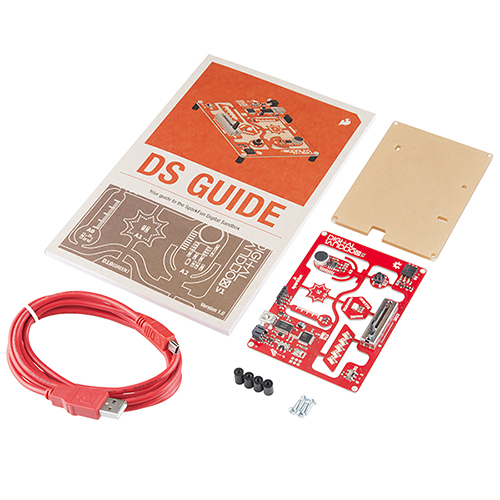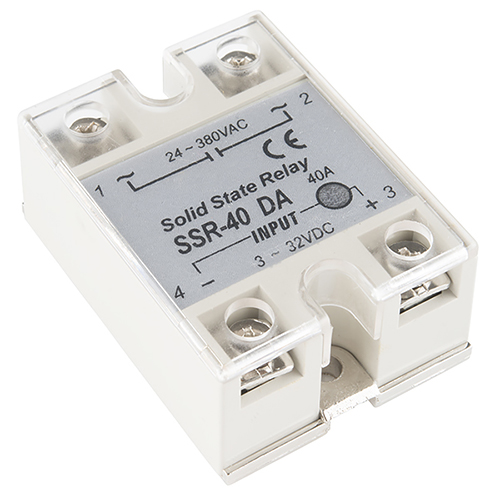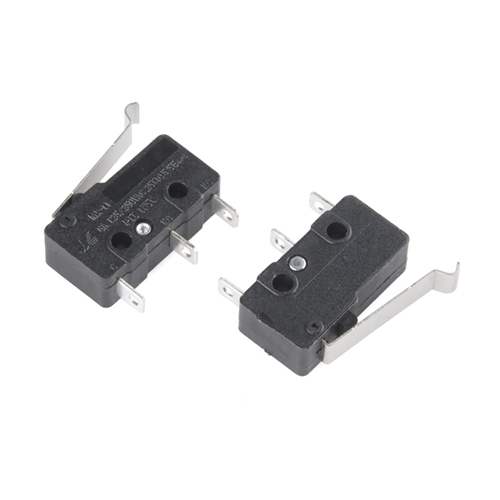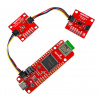We've got a few new things this week for you. We even have a zany new demo for one of our products, be sure to check out the video for this week.
ReplaceMeOpen
ReplaceMeClose
The Digital Sandbox fills in the gap between knowing absolutely nothing about programming and being comfortable with the Arduino IDE. Everyone has to start somewhere right? Don't let programming get in the way of your embedded hardware projects!
Like I said above, the Digital Sandbox aims to lessen the learning curve with programming. With a kit like the SIK, you are introduced to not only programming, but also circuits and basic electronics prototyping. Sometimes the combination of both concept to beginners can be a bit daunting. With the Digital Sandbox, the hardware is already connected properly, so all you need to worry about is the programming aspect. You can even use Ardublocks, which is a graphical drag-and-drop interface. The included manual walks you through 13 circuits, each using a different aspect of the hardware included on the board.
Want a little bit more from the Digital Sandbox? The Digital Sandbox Add-On Kit adds 3 additional circuits so you can learn how to interface with motors and a buzzer. The circuits are included in the manual and this kit provides the additional hardware needed for the experiments.
If you need to control high current AC voltage, you might want to check out this solid state relay. Just apply a DC signal to one side, and the other side switches on. You can use anywhere from 3 to 32VDC, and the relay only uses 7.5mA worth of current to switch, so you can drive it directly from a microcontroller. The relay can handle 40A worth of current.
We have some new microswitches this week. These switches are now sold in 2 packs. They have offset levers and are small enough to use in a lot of different applications. These work well for limit switches or homing switches for automation equipment. They also have mounts that allow them to be integrated easily into the Actobotics products.
That's all I have for this week, thanks for watching! We'll be back again next week, as always, with even more new products, see you then!












No Wedge..... shame on you Rob... shame on you!!!!
Just got this. Way cool! The design is top notch. The board is art, one thing you cant tell in the photos us that the white parts of board are translucent. Sweet!
If the length of the tubes for the sirens were changed and tuned, then hooked up to a micro, he could have played a basic tune with them.
I was so hoping that he would have to wear those hearing protectors hanging up behind him.... but alas, it appears that the hissing of the air, and squeal of cheap angle grinders were louder than the sirens....
The band-aid on the thumb gives Nick the credibility required to pull off such a project! LOL. :-)
I was kind of hoping Wedge would be making another appearance,,,
He will eventually. :)
I know nothing about solid state relays, but is there a reason you can't switch DC? How about LESS voltage than the 24v minimum shown? Just curious.. Also, since these switch fast, could you use PWM with these? I don't know why, but for example to dim an incandescent light or a string of old fashioned Christmas lights? Just curious what the capabilities might be..
Thanks!
Homebrewers with electric brewing systems have been using these for years to PWM heating elements. Those systems typically have a low frequency. Although when you are talking about heating a large pot of water, low frequency is OK, as it acts like a HUGE capacitor.
Typically solid state relays are used in situations where a typical magnetic coil with mechanical contacts style relay simply can't handle the high switching speeds and will, as a result, have a much shorter life span than a solid state relay would.
You can control the output via the input with a PWM DC signal, but the output requires 'crossing zero' to switch off, that is, if your input signal changes state from high to low, your output will change state but only after it's made either a negative to positive transition or positive to negative transition.
This particular model only switches at the zero crossing of the AC input. This means that you would, at best, only have 120 PWM steps at a frequency of 1Hz down to three steps (0, 50, 100) at a PWM frequency of 60Hz. Each step would correspond to one half cycle of the AC input. For those with 50Hz power it would be 100 steps @ 1Hz and three steps @ 50Hz. It might work for incandescent lights, though I would expect you to perceive the flicker at half power with anything more than a few steps.
The zero crossing switching is also why you can't switch DC with these. Technically, you might be able switch DC if the zero crossing doesn't require the output voltage to swing negative to switch, but it will behave quite oddly. The output would latch the current state of the input when DC is applied to the output and would stay that way until DC is removed from the output. If the input was ON when DC is applied, then DC would flow so long as it is applied to the output, regardless of changes to the input. If the input was OFF when DC is applied, then DC wouldn't flow regardless of input change. Depending on the design of the zero-crossing detection circuit, you might be able to switch PWM'd DC so long as your PWM signal off width was long enough for the zero crossing to be detected and so long as the zero crossing circuit doesn't require the voltage to go negative to trigger.
There's a square law comes into effect when dimming incandescents, but apart from that, I've worked on many entertainment lighting dimmers that work as you described. They also need a big choke too,
...do the hand typey code stuff if you wanted. ;-)
I don't entirely remember saying that. I'm glad I did though, I like it.